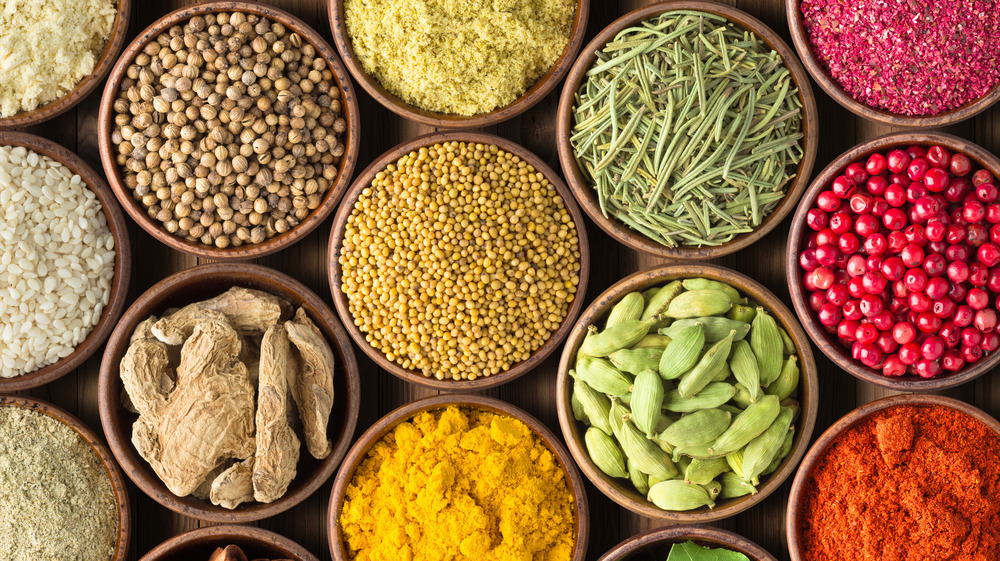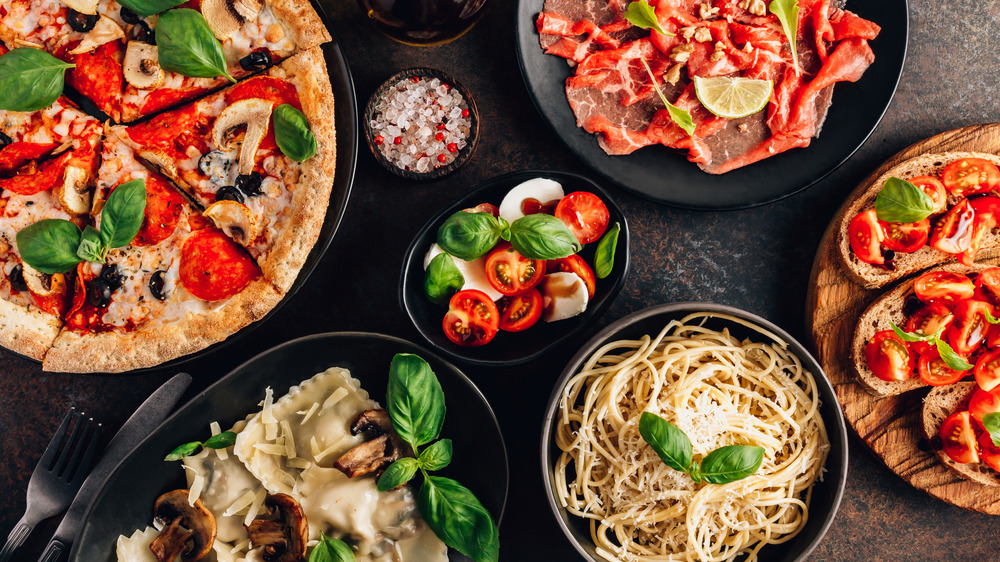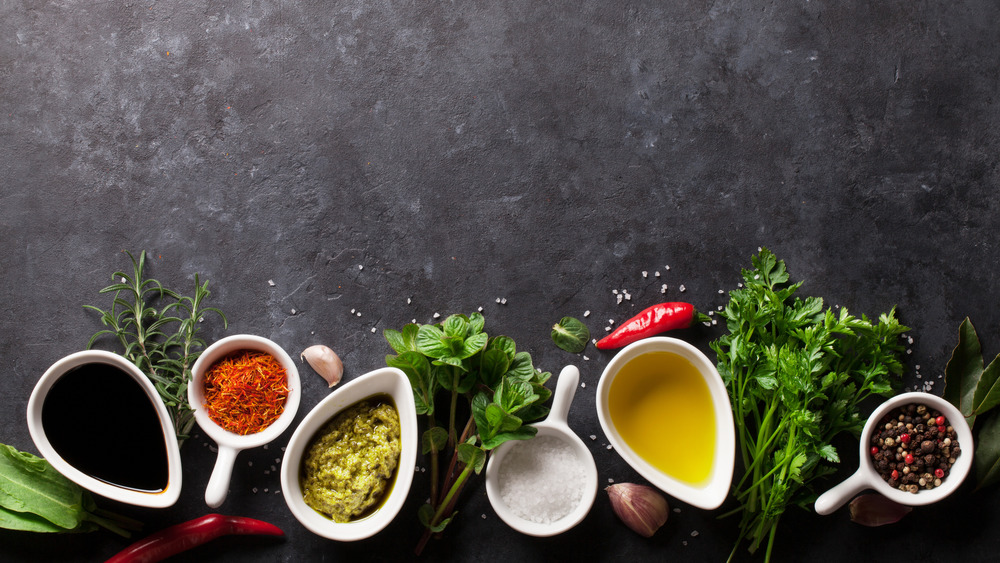This May Be The Most Over-Used Spice, According To Chefs
Let's face it, no matter how many helpful hacks you read or watch on TikTok, prepping garlic is a pain in the butt. Sure, you can just give each clove a few whacks with a heavy object or nuke it and slip that skin right off, but there's no tricks for helping you deal with all those annoying little papery bits that seem to get everywhere when you try to sweep them into the trash. Oh, and then there's mincing the garlic, which is not only a bother but will make your hands stink. While there is such a thing as garlic powder and even pre-minced garlic in a jar, everyone knows by now that both of these are big culinary no-nos — and it's true, they really don't taste as good as fresh garlic.
Dealing with fresh garlic wouldn't be so bad if it was just a once-in-a while thing, but these days, it seems as if every single non-dessert recipe (and maybe even a few desserts, as well) call for at least a few cloves of the stuff. Sigh. Would it be so horrible if, maybe every once in a while, you just...left the garlic out? Good news if you're not an all-garlic, all the time kind of person. Quite a few chefs, including the late, great Marcella Hazan, agree that garlic is incredibly over-used and that, in many cases, it may even detract from a dish's other qualities.
Even Italian food doesn't require much garlic
Hazan was a cookbook author who specialized in Italian cuisine, and she loved to point out that, in Italy, garlic is really just a sometime thing, and that some chefs don't use it at all. Later in her career, she went so far as to write that "The unbalanced use of garlic...is the single greatest cause of failure in would-be Italian cooking," (via The Globe and Mail). Toronto chef Rob Gentile, himself a native of Italy, agrees, telling The Globe and Mail: "I never really grew up with a lot of garlic. But when I started cooking in professional kitchens, it was everywhere." Another Italian-born Toronto chef, Gabriele Paganelli, actually went to far as to ban the use of garlic in his restaurant for the first year it was in business and limit its use for another year until his kitchen staff learned not to rely on it.
As to why Italian-American cooking tends to contain such a great deal of garlic in everything? Well, it may have been a way of compensating for the lack of flavor in the produce immigrant cooks were forced to use. A tomato you buy from a Mulberry Street pushcart, after all, isn't going to taste quite the same as one picked fresh from the vine on a sun-drenched hillside in Campania.
Why over-using garlic can be a problem
As vegetarian chef Simon Rimmer told The Guardian, "I like [garlic] when it's meant to be there, but menus never list garlic as a major ingredient, which is insensitive, considering the impact it can have on a dish." Food writer Anna Jones agrees, and added, "There's an overuse of garlic in cooking in general...more subtle dishes don't need garlic." They feel that the craze for garlic is symptomatic of our need for big, bold flavors in everything, but using garlic to deliver this is somewhat akin to drowning your steak in ketchup, a food crime no chef (other than Alton Brown) would ever endorse.
The Bird Flight blog puts forth yet another reason for today's garlic obsession, mentioning the fact that it's long been promoted as a super-food capable of curing numerous illnesses. Once any food, from kale to dark chocolate, gets that "healthy" label, it's suddenly almost unavoidable, and if you don't happen to care for it...well, too bad for you, you're out of step. Healthy or not, though, there are people who are actually allergic to garlic, as is the case with the blog writer and their husband, and they say it's surprisingly difficult to find any prepared foods or restaurant entrees that don't contain this ingredient.
What you can use in place of garlic
If you don't want to use garlic in a recipe, well, just don't! Unless the garlic is meant to play an integral role, as is obviously the case with something like garlic bread, there may be other seasonings at play that may be able to carry the dish on their own. If there are other aromatics involved, such as onions or shallots, then garlic could even be superfluous. Also, if you have access to super-fresh, high-quality ingredients, you might want to skip any strong-flavored seasonings so you can appreciate that wagyu beef or just-picked sweet corn for itself alone. Some lilies, after all, need no gilding (or garlicking).
If you're afraid that your soup, stew, or stir-fry may be a bit bland without garlic, there's nothing stopping you from playing around with other herbs, spices, or even unexpected ingredients like Marmite, something Rimmer (via The Guardian) says can lend "an incredibly rich, umami note." If yeast paste isn't your thing, Rimmer also endorses paprika, saying it's "just the best bloody ingredient going for adding depth and body." Other flavorful add-ins include oregano, lemon juice, balsamic vinegar, and maple syrup. You don't need to banish garlic for good, just, you know, mix up your seasoning palette. You may be amazed at how good your food can be when each dish no longer tastes just like all the others.



